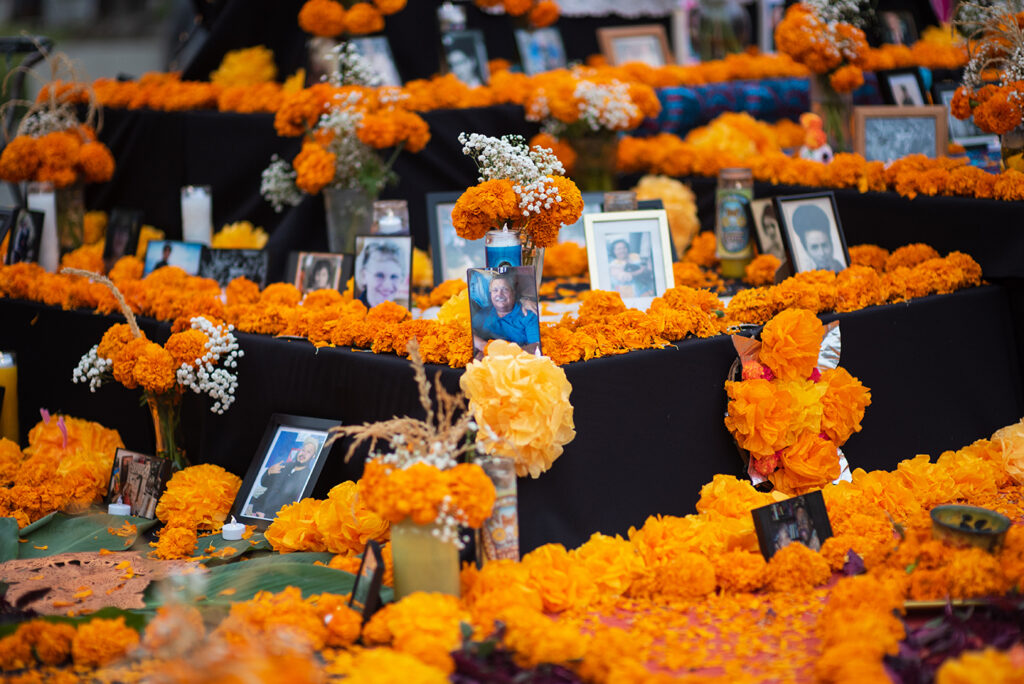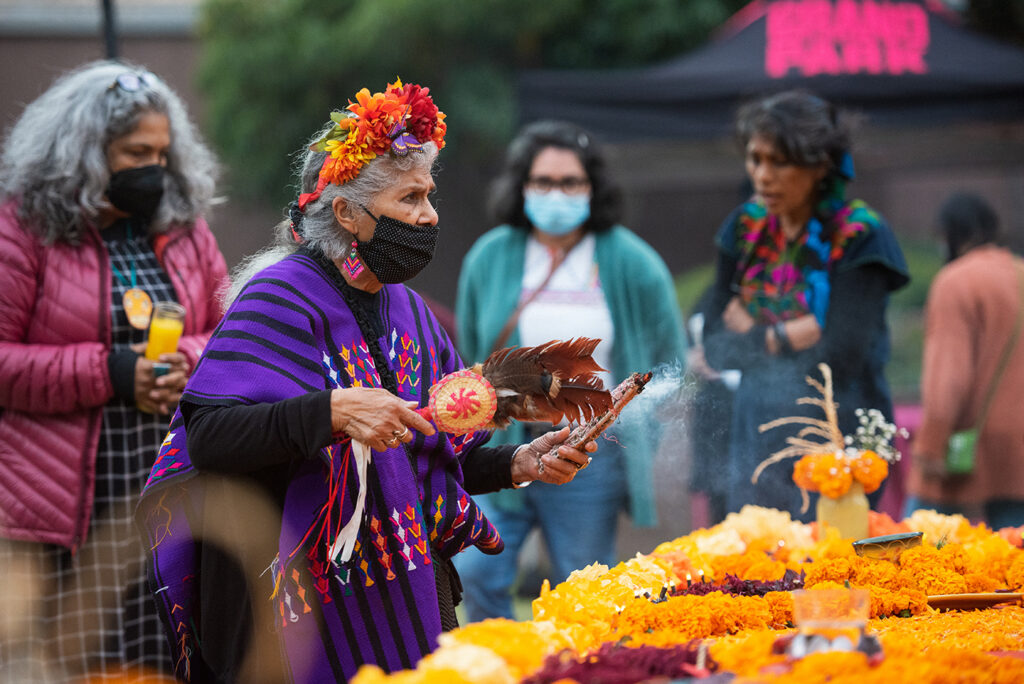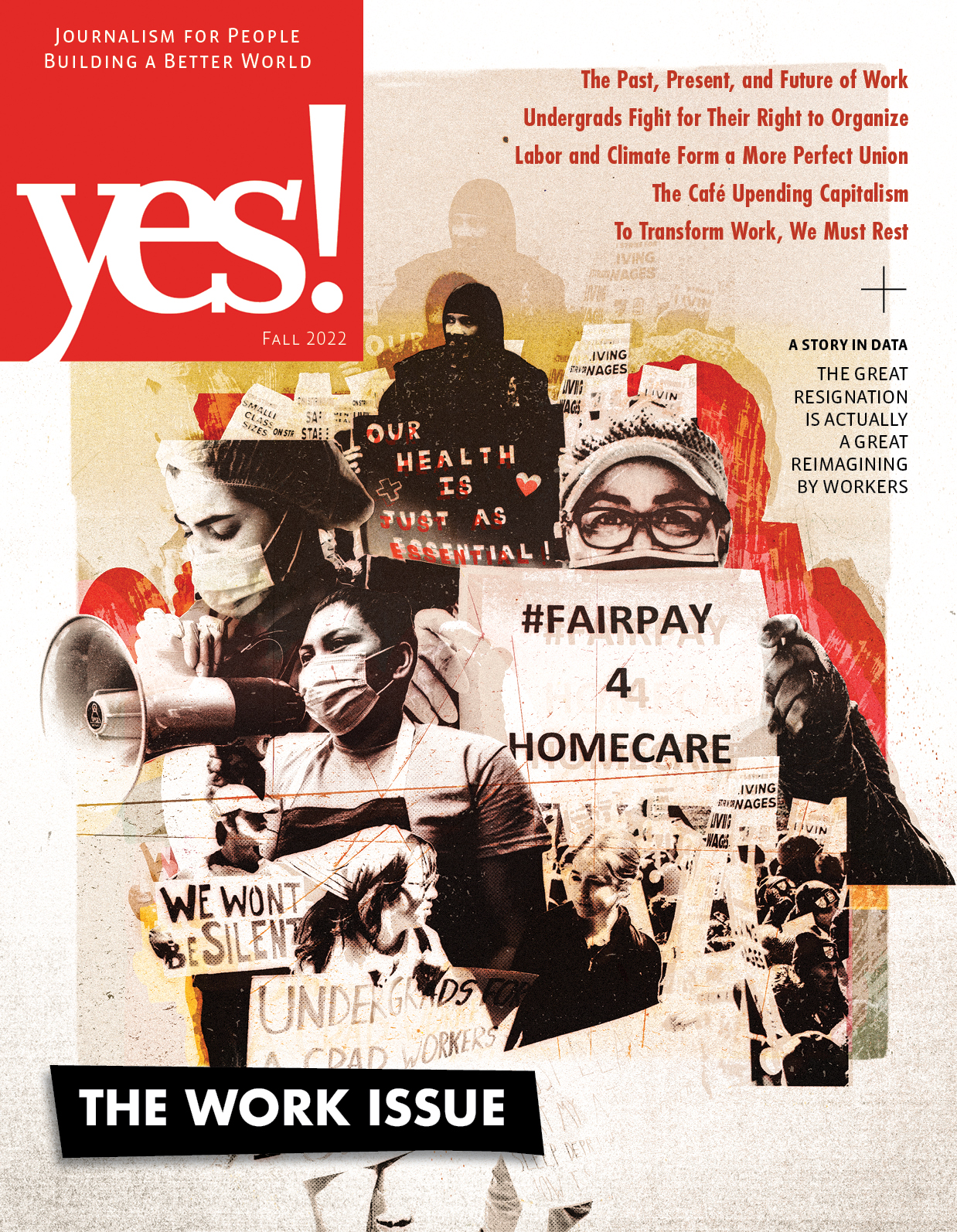Opinion Advocates for ideas and draws conclusions based on the author/producer’s interpretation of facts and data.
A Master Altarista Explains the Essentials of a Día de los Muertos Altar

Ofelia Esparza is an artist, an altarista, or altar-maker, and an educator. She was born in East Los Angeles in 1932, not far from where she still lives.
In 2018, her work in creating and promoting Día de los Muertos-themed altars was recognized with the nation’s highest honor for folk and traditional art with a National Heritage Fellowship from the National Endowment for the Arts.
She spoke with YES! about the essential elements of altar-making and how she is passing on the family tradition to her children. Esparza is a mother to nine children. Her fifth child, Rosanna Esparza Ahrens, joined us partway through the conversation.
This interview has been edited for length and clarity.

Sonali Kolhatkar: Is there a standard method of altar-making among Mexican Americans or is it an evolving art?
Ofelia Esparza: Altares or ofrendas are a bridge between life and death, between the living and the dead. When we create an altar, we’re creating sacred space.
Over the years I’ve learned of different traditions, so I can’t really say what is the prototype for an altar, but the elements that I feel are important are the photographs, the candles, the flowers, of course, the food, incense, and papel picado.
It’s become such an art form that many artists do representations of these elements, not necessarily the items themselves.
There are so many ways of celebrating Día de los Muertos in Mexico, which of course has come over with the immigration of people into the United States, that I don’t say, ‘This is the way it has to be.’ The way that I do it is based on my mother’s tradition.
My mother always had an altar with photographs. To me those are the main pieces because the photographs are what generate the stories, and then the actual images of ancestors that you might not have known in person but that you know were part of your background.

Kolhatkar: Besides photographs of ancestors, are there any other elements to an altar that you feel are essential?
Esparza: I have to represent the four natural elements—that goes back to Indigenous culture—and that’s wind, earth, fire, and water.
Wind
In Mexico, and today here in the U.S., people are using papel picado. The papel picado are the cut paper banners that are made out of tissue paper that represent wind. So, with any breeze they move. They create the ambiance for the soul to come and partake of the altar that we have prepared for them.
Also, candles are part of the wind element.
Earth
Food and flowers represent Mother Earth.
Marigold is essential, I believe. The marigold has a strong aroma, which beckons the soul, [saying], ‘Here is your altar.’ The scent draws them to the altar. Also, in ancient times it represented the sun, which was the major element of the deities.
We also make tissue paper flowers. That tradition came from my mother. Something handmade for the ofrenda is your offering. Ofrenda means offering and sometimes I use the words altar and ofrenda interchangeably. It’s an offering to our loved ones, our ancestors.
The handcrafted or handmade items, including food, are part of your essence that you’re offering to this altar, to your ancestors.
Fire
In addition to wind, candles also represent fire.
And incense is also a representation of fire. We use copal, which is a natural incense that is traditionally used since ancient times.
Water
You need a glass of water on the altar because the souls came from so far away, they were going to be very thirsty. That’s a tradition that I learned.
Watch a video of Ofelia Esparza explaining the essentials of altar making:
Kolhatkar: Rosanna, what is it like to learn the tradition of altar-making from your mother? Can you share some experiences of making altars?
Rosanna Esparza Ahrens: I remember the flower-making. It’s almost therapeutic, mediative, because you’re cutting paper and manipulating it. It has this familiar sound from moving this tissue paper. There’s a lot of folding and cutting. And meanwhile we’re sharing stories or having coffee and pan dulce, or wine, or tequila depending on who’s present and what stories we’re sharing.
And those flowers are part of the arch that is on the ofrenda. Once that arch is up, it’s like, now we can do everything else because it is the first thing that goes up.
We bring all the items together. We’ve made all the levels with shelves and boxes and covered them with fabric. We usually have three or four levels. Maybe there’s somebody that recently passed that you want to honor this year and so they have the higher position on the altar. And all the other ancestors are there because they’re all together.

|
Sonali Kolhatkar
is currently the racial justice editor at YES! Media and a writing fellow with Independent Media Institute. She was previously a weekly columnist for Truthdig.com. She is also the host and creator of Rising Up with Sonali, a nationally syndicated television and radio program airing on Free Speech TV and dozens of independent and community radio stations. Sonali won First Place at the Los Angeles Press Club Annual Awards for Best Election Commentary in 2016. She also won numerous awards including Best TV Anchor from the LA Press Club and has also been nominated as Best Radio Anchor 4 years in a row. She is the author of Bleeding Afghanistan: Washington, Warlords, and the Propaganda of Silence, and the co-director of the nonprofit group, Afghan Women's Mission. Her forthcoming book is Rising Up: The Power of Narrative in Pursuing Racial Justice (City Lights, 2023). She has a Master’s in Astronomy from the University of Hawai’i, and two undergraduate degrees in Physics and Astronomy from the University of Texas at Austin. She reflects on her professional path in her 2014 TEDx talk, “My Journey From Astrophysicist to Radio Host.” She can be reached at sonalikolhatkar.com
|






